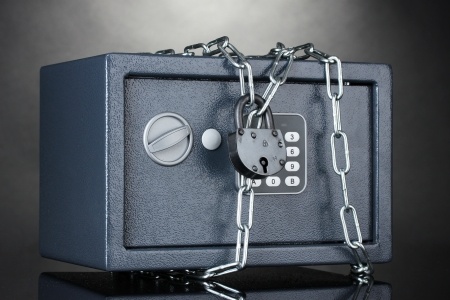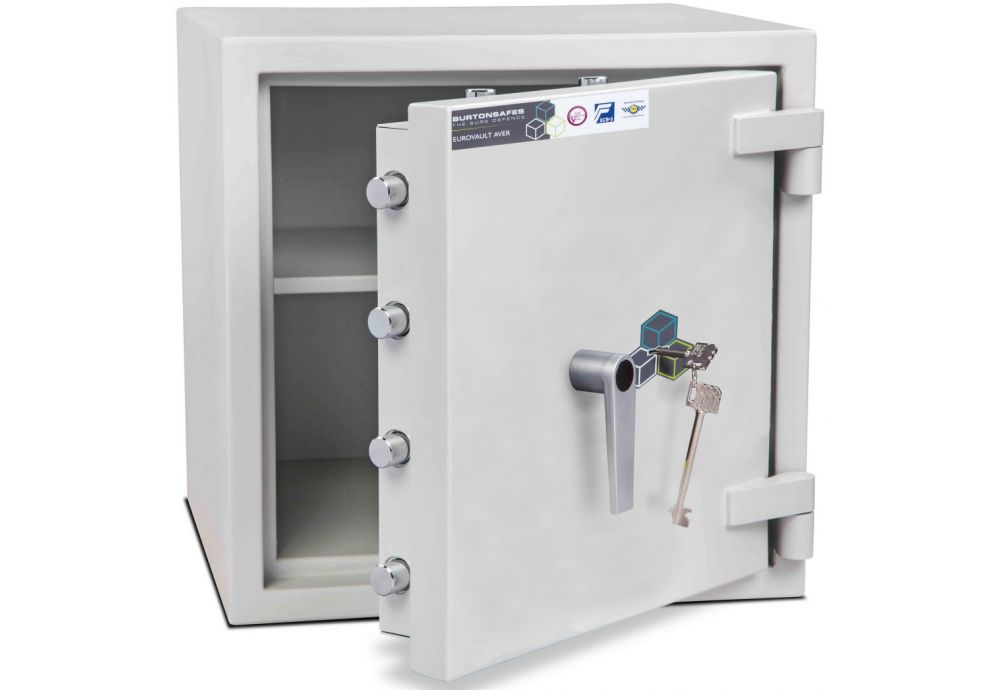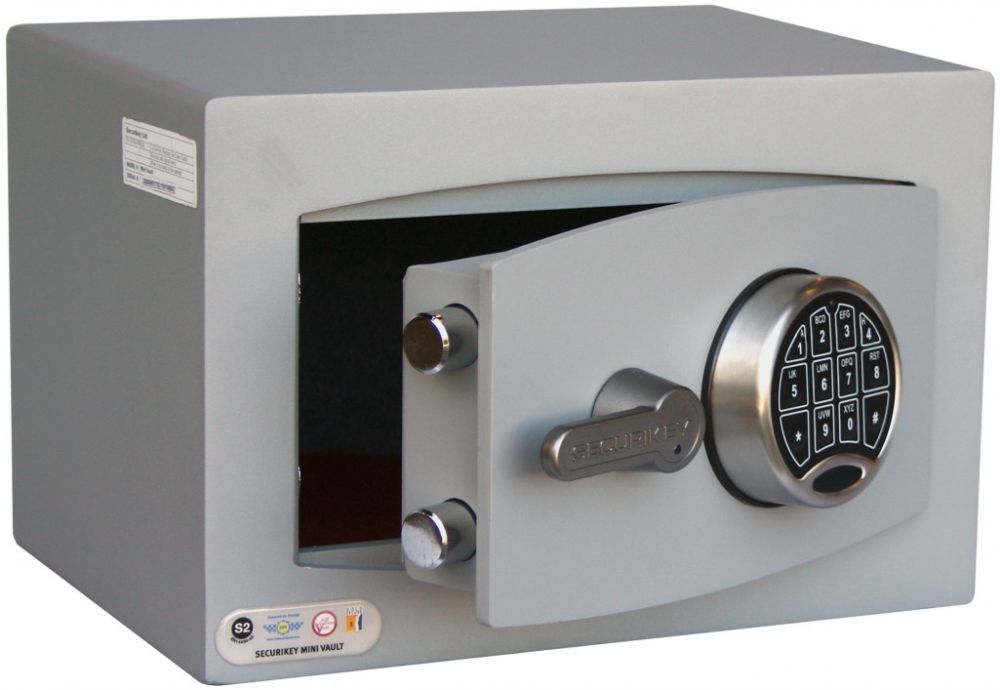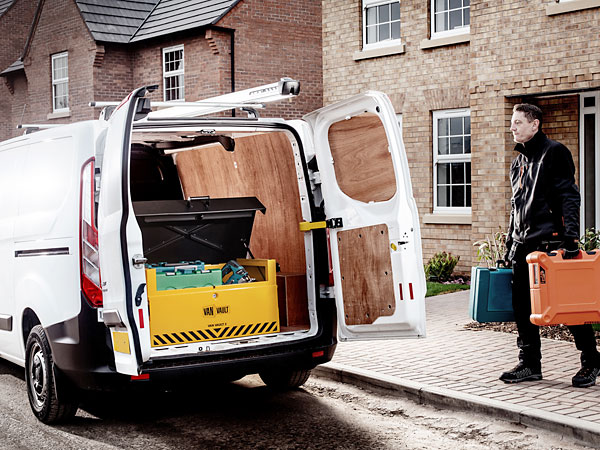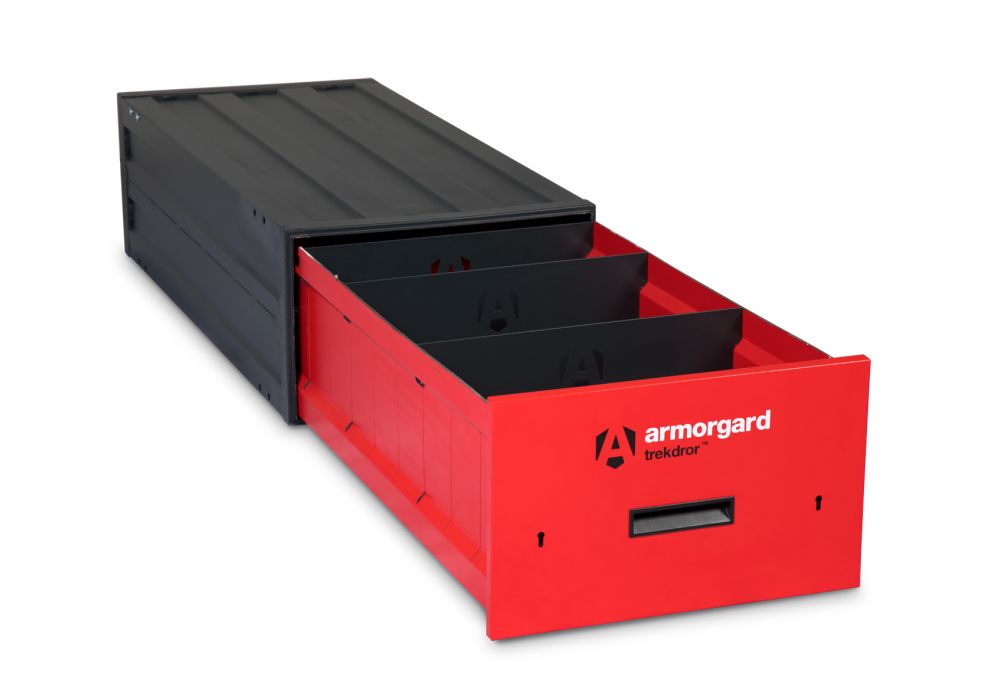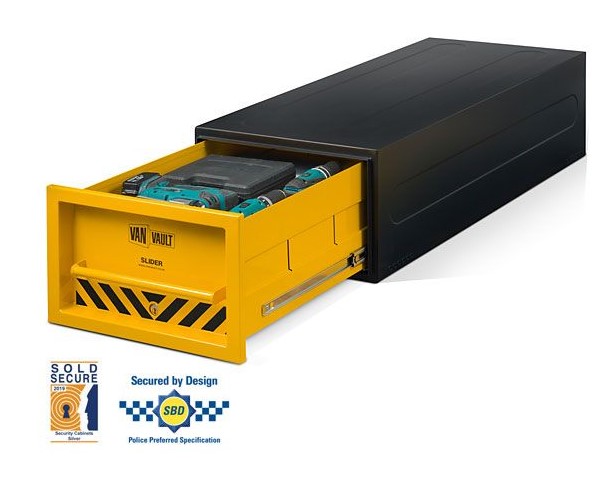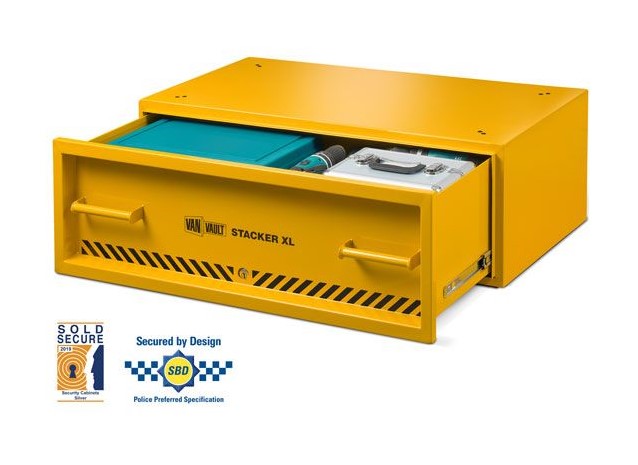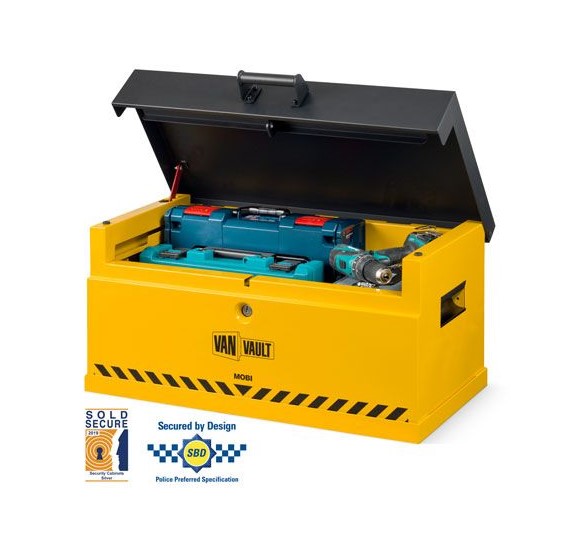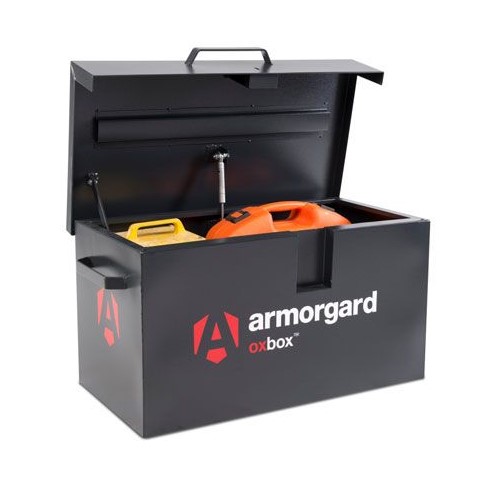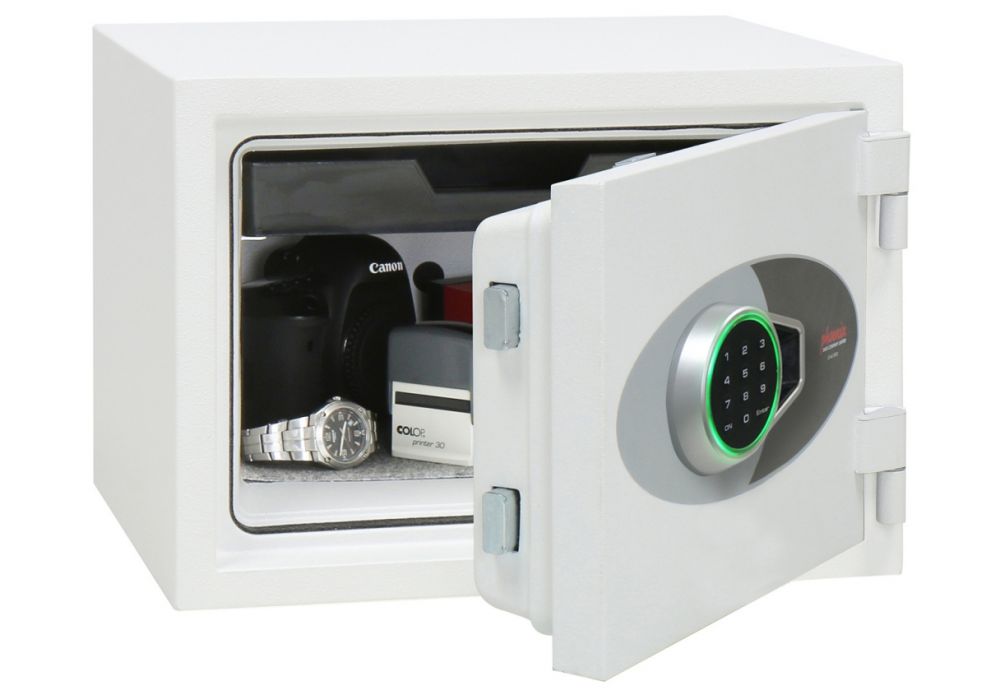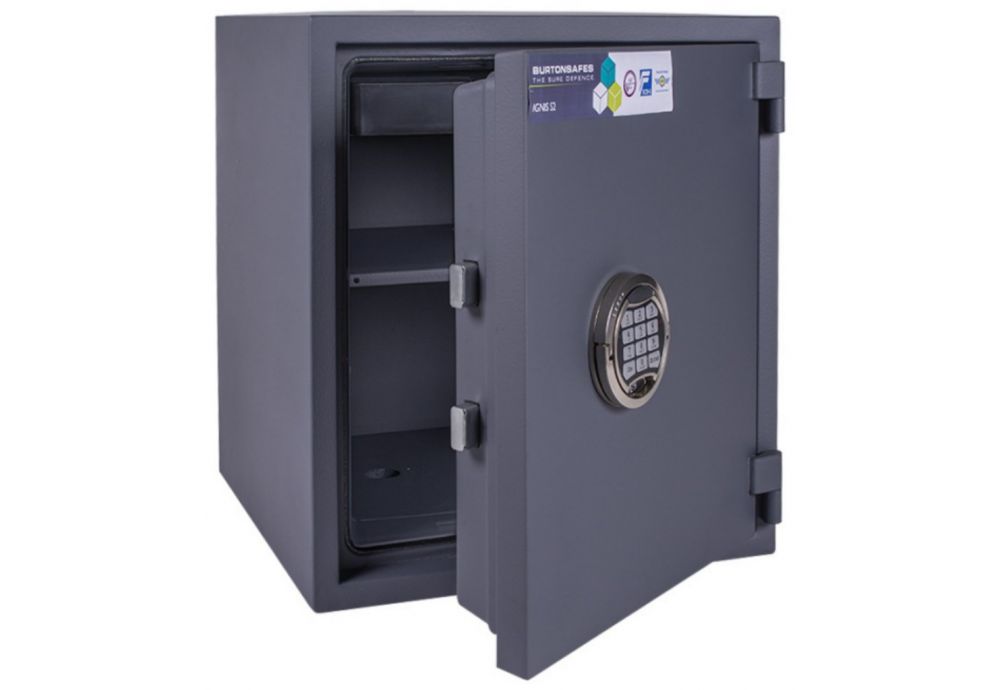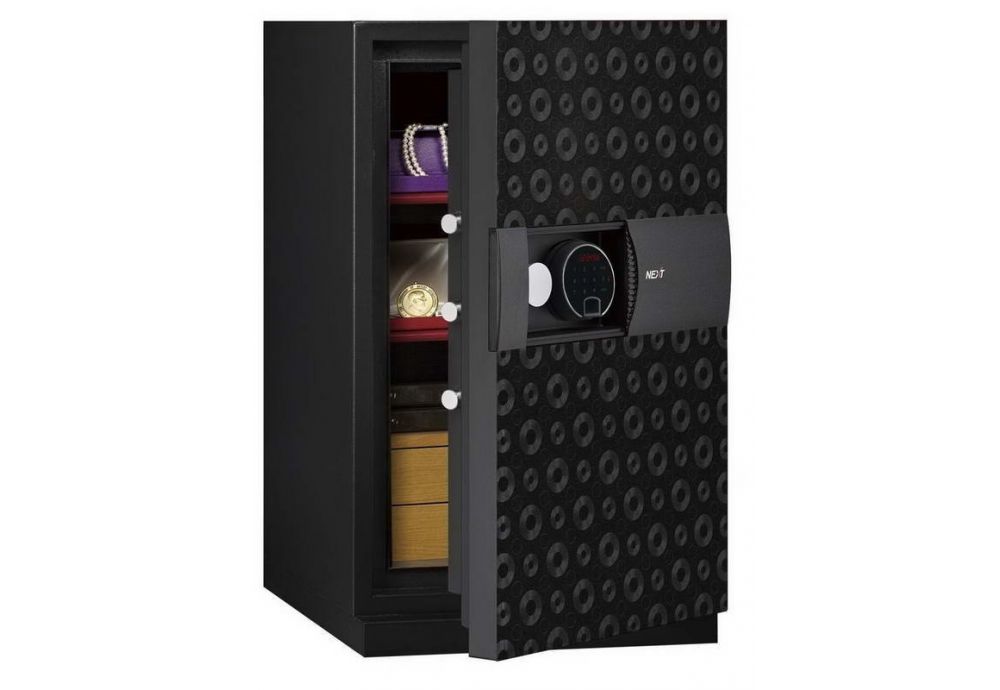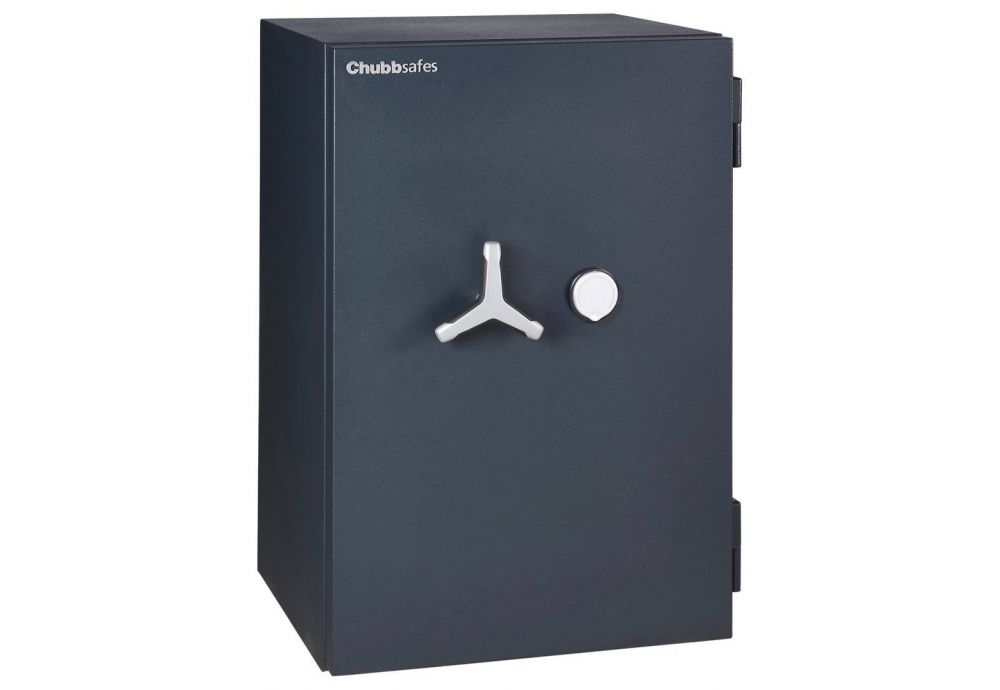Safe with Cylinder Lock
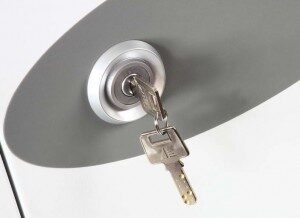 Actually, a cylinder lock is not suitable for a burglar-resistant safe. Cylinder locks are used on key boxes and a number of light fire resistant safes and fire resistant drawers. The focus here is on fire safety and not protecting against theft.
Actually, a cylinder lock is not suitable for a burglar-resistant safe. Cylinder locks are used on key boxes and a number of light fire resistant safes and fire resistant drawers. The focus here is on fire safety and not protecting against theft.
A cylinder lock reduces costs, making the safe cheaper to purchase.
Safe with Double-Bit Key Lock
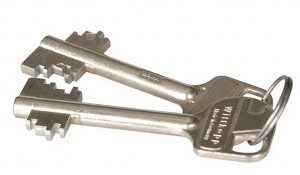 Most safes are fitted with a double-bit key lock as standard. This is the cheapest variant and therefore an important advantage over an electronic code lock.
Most safes are fitted with a double-bit key lock as standard. This is the cheapest variant and therefore an important advantage over an electronic code lock.
A safe with key lock is equipped with a double-bit key mechanism to meet the high security requirement. In terms of security, a safe with a key lock is no less than a safe with an electronic code lock. In addition, a key lock is much less sensitive to changing weather conditions, making this lock variant very reliable.
A disadvantage of a key lock is that the key has to be managed properly. If a burglar finds the safe key, he will certainly look for the safe and open it without hindrance.
Safe with Mechanical Combination Lock
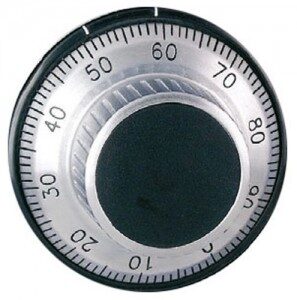 A mechanical (number) combination lock is operated by dialing the correct code several times. Depending on the version, a full turn is usually made 3 or 4x, and then the 'opening code' is turned. This operates the lock and the safe can be opened. A mechanical code lock can be set to any desired code by means of an adjustment key. This adjustment is done through an opening in the back of the safe door.
A mechanical (number) combination lock is operated by dialing the correct code several times. Depending on the version, a full turn is usually made 3 or 4x, and then the 'opening code' is turned. This operates the lock and the safe can be opened. A mechanical code lock can be set to any desired code by means of an adjustment key. This adjustment is done through an opening in the back of the safe door.
A mechanical combination lock has a very high reliability and only the person with the correct code can open the safe. No key needs to be managed for this lock.
The disadvantage of a safe with a mechanical code lock is a higher purchase price and it requires precise turning in the correct position.
Safe with Electronic Code Lock
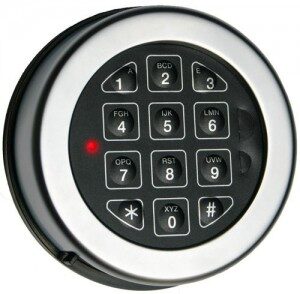 An electronic code lock or digital lock on a safe offers a number of advantages. This way you do not have to manage a key, but you can open the safe with a personal PIN code. Most electronic combination locks are also equipped with a master code and one or more user codes.
An electronic code lock or digital lock on a safe offers a number of advantages. This way you do not have to manage a key, but you can open the safe with a personal PIN code. Most electronic combination locks are also equipped with a master code and one or more user codes.
In addition, there is special anti-manipulation blocking. The digital lock is temporarily blocked for a number of incorrect attempts. Advanced electronic safes also have the option to set an opening delay, double code or even offer an option to connect to an alarm system.
Electronic code locks for safes are battery powered and in case of a weak battery you will be warned visually and / or acoustically in time. If you ignore this warning, you can always connect a battery from the outside and open the safe with your user code. You can then replace the battery.
Electronic Code Lock + Emergency Key
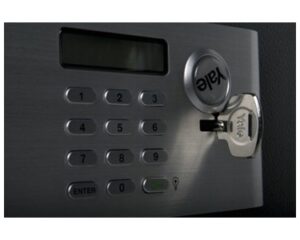 The reliability of today's electronic code locks for safes is high. Cheaper (and often not certified) locks are equipped with an emergency key to open the safe if the electronics refuse service or a so-called 'lock out'. These types of electronic locks are less reliable. An emergency key can usually not be reordered, because there is no registration of the emergency locks and keys.
The reliability of today's electronic code locks for safes is high. Cheaper (and often not certified) locks are equipped with an emergency key to open the safe if the electronics refuse service or a so-called 'lock out'. These types of electronic locks are less reliable. An emergency key can usually not be reordered, because there is no registration of the emergency locks and keys.
A disadvantage is that safes equipped with a good electronic code lock are more expensive to purchase compared to a key lock.
Note: You often buy electronic lockers for a few tens at the hardware store. These locks are generally not safe. A good lock simply costs a bit more.
Safe with Biometric Code Lock by Fingerprint
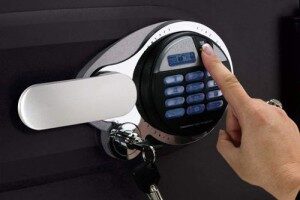 Biometric locks on safes have been used for several years, but are only available on a limited number of safes. This is mainly due to the high purchase price. In addition, it is expensive to get a biometric code lock certified for burglar-resistant safes.
Biometric locks on safes have been used for several years, but are only available on a limited number of safes. This is mainly due to the high purchase price. In addition, it is expensive to get a biometric code lock certified for burglar-resistant safes.
A big advantage of a biometric code lock is that the safe can be opened with a fingerprint. In this way, several people can access a safe. With advanced biometric locks, a log can be read and users can be managed (add, remove, temporarily block).
Advantages and disadvantages of safe locks in a row
| Safe lock type | Benefits | Cons |
| Cylinder (safety lock) |
|
|
| Double-bit key lock |
|
|
| Mechanical combination lock |
|
|
| Electronic combination lock |
|
|
| Biometric code lock |
|
|
